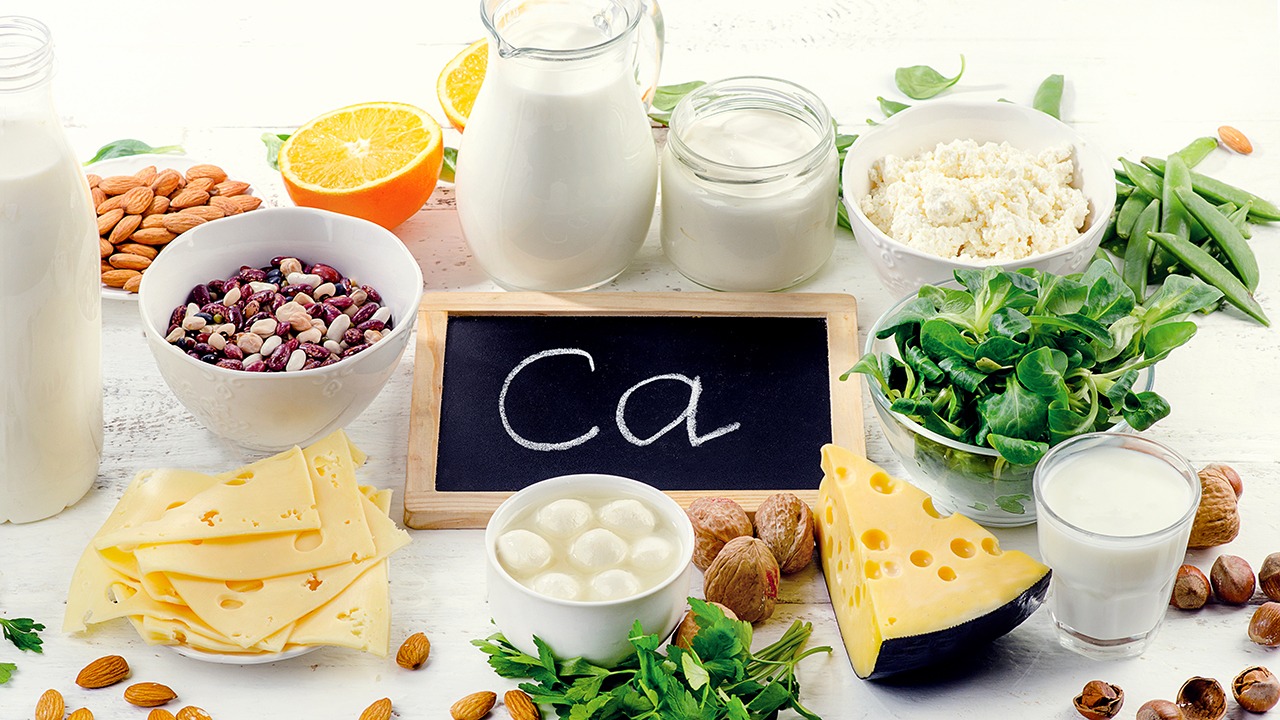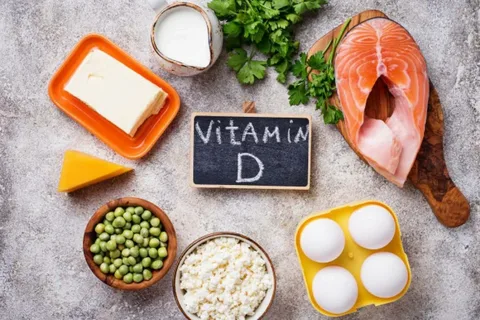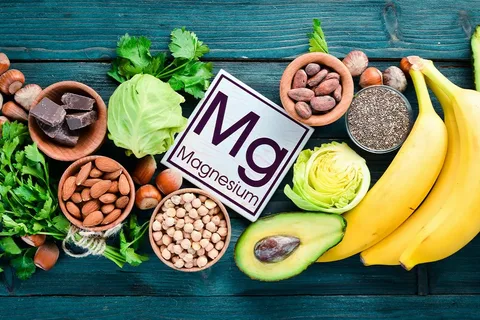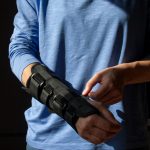By Jennifer Lefton, MS, RD/N, CNSC, FAND
Updated on January 02, 2024
Medically reviewed by Melissa Nieves, LND
Maintaining good bone health is important as you age.
Good nutrition is key to bone development and strength.
As you get older, you start to lose bone mass. Continued loss of bone mass may develop into osteoporosis (decrease in bone mass and bone mineral density) and increase your risk of fractures.
Several nutrients are integral to bone health, and these nutrient requirements can often be met through diet alone. However, supplementation, mainly for calcium and vitamin D, may be beneficial for some people when nutrient needs can’t be met through food choices.
This article reviews the nutrients essential for good bone health and whether you need supplementation, as well as best practices when supplementing.
Supplements

Supplements for Bone Health: Are They Necessary?
Supplementation is only recommended in a few circumstances and for a few nutrients, such as calcium and vitamin D. Most of the research on nutrient supplementation for bone health has been done on calcium and vitamin D.1
While important to bone health, other nutrients, such as magnesium and vitamin K, do not have enough research to support routine supplementation.
Good nutrition overall is important for healthy bones. Several nutrients have a key role in bone health, including:
- Calcium: Builds and maintains healthy bones2
- Vitamin D: Helps with calcium absorption and bone remodeling3
- Magnesium: Helps with the structural development of bone; affected by parathyroid hormone and vitamin D levels, which regulate bone health4
- Phosphorus: Most phosphorus is found in the bone; bone helps to regulate phosphorus balance5
- Vitamin K: Is required for an enzyme involved in bone metabolism.6
- Boron: May help with calcium metabolism and bone formation7
- Soy isoflavones: Provide estrogen, which may help reduce bone loss
The nutrients needed can all be obtained through a healthful diet. Therefore, supplementation is not routinely needed to maintain good bone health. The case may be different for those who have calcium or vitamin D deficiencies and require supplements to meet the recommended amounts.
Video: “Rehabilitation after a Hand Fracture”
Upper limb. Set No.1 improvement of mobility and range of joint movement
For additional information about the recovery process after a hand fracture, you can watch a video demonstrating exercises and rehabilitation recommendations.
Calcium
Calcium is a mineral found in the human body and in the foods that we eat. It is the most abundant mineral in the body. As much as 98% of the calcium in the body is found in the bones.2

Calcium is needed to build and maintain healthy bones. Bone remodeling occurs every day in the body. This remodeling is often thought of as similar to a bank account during which deposits and withdrawals of calcium occur in the bone. When withdrawals exceed the deposits, bones can weaken.
Calcium requirements vary by age and sex and range from 1,000 to 1,300 milligrams (mg) daily. Higher amounts are needed during adolescence, pregnancy, breastfeeding, and for adults over 70.2
Sources of calcium in the diet include:2
- Dairy products like milk, yogurt, and cheese
- Soy products such as soy milk, tofu, and tempeh
- Orange juice fortified with calcium
- Salmon and canned sardines
- Turnip or mustard greens, spinach, and kale
Some antacids, like Tums and Rolaids, also contain calcium carbonate.2 This amount of calcium should be included in your daily calcium intake.
Video: “Rehabilitation for lower limb problems”
Exercises for the pelvic girdle and hip joint. Set No.2 is aimed at strengthening the muscles
For additional information about the recovery process after a hip fracture, you can watch a video demonstrating exercises and rehabilitation recommendations.
Calcium Supplements
Supplementation is generally only advised if you can’t meet your calcium needs through diet alone.
Calcium is available as a single nutrient supplement, a calcium and vitamin D supplement, or in a multivitamin preparation. Multivitamin preparations generally contain less calcium than a single calcium supplement.
Calcium is available in several different forms. Calcium carbonate and calcium citrate are the most common, but calcium gluconate, calcium lactate, and calcium phosphate are also options.
Calcium carbonate tends to be cheaper but should be taken with food.
Calcium citrate can be taken at any time of the day. It may also be a better option for older individuals who have less stomach acid production.2
Calcium Supplements for Bone Health: What the Research Says
Historically, calcium supplements have been recommended for women in menopause or who are postmenopausal, but this is now considered controversial. Too much calcium can lead to other health problems or potential side effects.8
Declining estrogen levels during menopause alter bone remodeling leading to reduced bone mass. Some research (but not all studies) have found that calcium supplementation improves bone mass density (BMD) and reduces fractures.2
A large clinical trial of more than 36,000 postmenopausal women randomized participants to receive 1,000 mg of elemental calcium and 400 international units (IU) of vitamin D or a placebo (a treatment with no active properties that’s given to a control group in trials). Calcium and vitamin D supplementation increased hip BMD but did not reduce hip fractures. Supplementation also led to an increased risk of kidney stones.9
However, a recent meta-analysis found that the research does not support calcium or vitamin D supplementation to improve BMD in premenopausal women.10
Some studies have also found an increase in heart-related issues with calcium supplementation in postmenopausal women.1112 This means that, for some, the risks of supplementation may outweigh the benefits.
As a result of the data, the U.S. Preventive Services Task Force (USPSTF) does not recommend supplementing calcium and vitamin D for the primary prevention of fractures in otherwise healthy people.13
Vitamin D
Vitamin D is a fat-soluble vitamin found in some foods and added to others. It is available as a supplement as well. Vitamin D is also made in the body when exposed to ultraviolet (UV) light from the sun.

Vitamin D promotes calcium absorption and is needed for bone remodeling. Not having enough vitamin D can weaken bones and make them brittle. In children, severe vitamin D deficiency can lead to rickets, a condition that weakens bones.3
Vitamin D requirements vary by age and range from 400 to 800 IU. The Recommended Dietary Allowance (RDA) for adolescents and adults is 600 IU, and for older adults over 70, it is 800 IU.3
Vitamin D is available in several foods, such as:
- Fish like trout, salmon, and sardines
- Mushrooms
- Eggs
- Milk, soy milk, nut milk, and oat milk fortified with vitamin D
- Cereals fortified with vitamin D
Vitamin D Supplements
You might need to supplement if you cannot meet your vitamin D needs through food alone. It is now more common that lab work includes screening for vitamin D deficiency, which can tell whether you need to consume more.3
Vitamin D can be added to calcium supplements and multivitamins or supplemented as a single nutrient. People who are vitamin D deficient will usually take a supplement as a single vitamin D dose.
Talk to your healthcare provider if you think supplementing is necessary for you.
Vitamin D Supplements for Bone Health: What the Research Says
When it comes to vitamin D supplements for bone health, the research shows a similar story to calcium.
One systematic review found that supplementation improves vitamin D status and bone remodeling in postmenopausal women.14 Another systematic review and meta-analysis found that vitamin D supplementation improved BMD.15
However, after reviewing the data, the USPSTF concluded that vitamin D supplementation does not reduce the number of falls or fractures. Therefore, it does not recommend taking vitamin supplements to prevent fractures in otherwise healthy adults.
Calcium and Vitamin D Supplements for Bone Health
Calcium and vitamin D play important roles in maintaining healthy bones. When calcium or vitamin D needs are not met through food alone, supplementation is advised.
The Food and Drug Administration (FDA) backs the health claim for the use of supplements containing calcium and vitamin D to reduce the risk of osteoporosis, an aging disease characterized by loss of bone mass and density.2 However, it’s likely only needed if you cannot meet daily requirements through diet alone.
Magnesium
Magnesium is also needed to build and maintain healthy bones. There is a positive relationship between higher magnesium intake and BMD. Women with osteoporosis have also been found to have lower serum magnesium levels.4

One study found magnesium supplementation reduced bone loss in postmenopausal women with osteoporosis.16
The RDA for magnesium for adults ranges from 310 mg to 420 mg daily.4 Diets with adequate amounts of magnesium promote bone health. Eating a variety of healthful foods will help to meet magnesium needs.
Dietary sources of magnesium include:
- Almond and pecans
- Peanut butter
- Potatoes
- Spinach
Diets with adequate amounts of magnesium promote bone health, but more research is needed to determine if supplementation has any role in preventing bone loss, osteoporosis, or fractures.
Magnesium and Vitamin D: Benefits, Dosage, and Why to Consider Taking Both
Vitamin K
Vitamin K is a fat-soluble vitamin that functions as a coenzyme for bone metabolism.6

Higher vitamin K intakes have been linked to higher BMD. A few studies showed that vitamin K supplementation improved BMD in postmenopausal women. However, more recent clinical trials found no effect of vitamin K on BMD.6
Vitamin K requirements for adults range from 90 to 120 micrograms (mcg) daily.6 Vitamin K needs can be easily met through diet. Foods that are good sources of vitamin K include:
- Leafy green vegetables, such as collard, kale, spinach, turnip greens, broccoli
- Soybeans, edamame, and soybean oil
- Canned pumpkin or carrot juice6
Further research is needed before routinely recommending vitamin K supplementation for bone health.
Boron
Boron is a trace element found in some foods. It is also available as a supplement. Boron’s functions in the body are not clear, but it is found in bones, and it is thought to have a role in calcium metabolism and bone formation.7
Boron is not considered an essential nutrient, and therefore, there is no RDA for boron.7
Preliminary research on boron for bone health has been mixed, and there is not enough good research data to support supplementing boron for bone health.7
Isoflavones
Isoflavones are compounds found in soy products. They have an estrogen effect on the body. Three common isoflavones include genistein, daidzein, and glycitein.17

Research has examined the effects of isoflavones on postmenopausal bone loss, but study protocols and outcomes have been mixed.
Soy isoflavones have improved bone calcium retention compared to placebo in research.18 One clinical trial found that daily supplementation of 120 mg of soy hypocotyl isoflavones reduced overall bone loss but did not slow bone loss at common fracture sites.19
A recent meta-analysis concluded that after menopause, soy isoflavones are effective in slowing bone loss.20
However, it is difficult to arrive at any conclusions and provide guidance on supplementing isoflavones based on the available data because:
- Supplements include different forms and amounts of genistein, daidzein, or glycitein2021
- Dosages of isoflavones used in studies have varied2021
- Outcomes may vary due to race, age, or whether an individual is premenopausal, perimenopausal, or postmenopausal20
Further research is needed before supplementing isoflavones can become a standard practice for preventing bone loss and fractures. In the meantime, adding soybeans, tofu, tempeh, and soy milk in your diet will provide you with isoflavones.
Precautions
Precautions When Taking Supplements
Supplementing may not be appropriate for everyone. Additionally, some supplement forms may not be recommended.

If you have kidney disease or a history of kidney stones, discuss your calcium needs with your primary healthcare provider before supplementing.2
Be sure to read the full supplement facts label and the ingredients before taking a supplement. Any calcium supplements that also contain dolomite should be avoided.
Excess amounts of vitamin A through supplementation may lead to bone loss.22
Nutrients like boron, magnesium, phosphorus, and vitamin K are important for bone health, but there is not enough research to support routine supplementation of these nutrients.
Who Should Take Supplements for Bone Health?
Always speak with a healthcare provider before taking a supplement to ensure that the supplement and dosage are appropriate for your needs.
Supplementation is recommended for individuals unable to meet calcium or vitamin D requirements through diet alone.
You may want to consider supplementation if:
- You have a history of fractures due to osteoporosis.
- You are at an increased risk of falls.
- You have been diagnosed with osteoporosis and a calcium or vitamin D deficiency.
Those at risk of deficiencies may include:
- People who eat a vegan (plant-based) diet23
- People with lactose intolerance or milk allergy
- Women of childbearing age with amenorrhea (six months or more without a menstrual period) that may be related to eating disorders, orthorexia (an obsession with eating healthy food), or eating too little with excessive exercise
Key Takeaways
Supplement use should be individualized and vetted by a healthcare professional, such as a registered dietitian, a pharmacist, or a healthcare provider. No supplement is intended to treat, cure, or prevent disease.

When considering calcium or vitamin D supplements, remember the following:
- Routine supplementation is generally not recommended for older adults.
- Supplementation is only appropriate for people who can’t meet calcium and vitamin D requirements through diet alone.
- Choose a supplement with the right dosage, as discussed with your healthcare provider.
- Consider which form of calcium (calcium carbonate vs. calcium citrate) or vitamin D is best for you.
- Choose a calcium supplement that also includes vitamin D for improved absorption.
- If you take multiple calcium doses daily, spread them throughout the day for better absorption.
- Avoid exceeding the calcium upper limit of 2,500 mg per day.
- Avoid exceeding the vitamin D upper limit of 4,000 IU per day.
Other Ways to Support Healthy Bones
There are other ways to improve your bone health:2425
- Take time to exercise, especially weight-bearing exercise, such as walking, hiking, or jogging, that help to build stronger bones.
- Include adequate protein in your diet.
- Avoid excessive amounts of salt.
- Avoid excessive caffeine intake.
- Do not use tobacco products.
- Limit alcohol.
Everything You Need to Know About Osteoporosis Prevention
Summary
Many nutrients play a role in bone health. Meeting calcium and vitamin D requirements is especially important. Other nutrients, such as magnesium and vitamin K, can also help support healthy bones. If you don’t get enough calcium or vitamin D through your food, you might need to take a supplement.
Routine calcium and vitamin D supplementation in postmenopausal women is not recommended unless a deficiency exists. Further research is needed for other supplements, like vitamin K and magnesium, before recommending them for bone health.
By Jennifer Lefton, MS, RD/N, CNSC, FAND
Jennifer Lefton, MS, RD/N-AP, CNSC, FAND is a Registered Dietitian/Nutritionist and writer with over 20 years of experience in clinical nutrition. Her experience ranges from counseling cardiac rehabilitation clients to managing the nutrition needs of complex surgical patients.

Demo version of GHRS video exercises for the Upper Limb Problems on YouTube.
You can find more information about the Upper Limbs Problems in our Blog.
Our website presents sets of exercises for the upper limbs in the following areas:
UPPER LIMB: SET №1 IMPROVEMENT OF MOBILITY AND RANGE OF JOINT MOVEMENT
UPPER LIMB: SET №2 STRENGTHENING THE MUSCLES OF THE SHOULDER COMPLEX AND JOINT STABILIZING. INITIAL STAGE
UPPER LIMB: SET №3 STRENGTHENING THE MUSCLES OF THE SHOULDER COMPLEX AND JOINT STABILIZING. MID STAGE
UPPER LIMB: SET №4 STRENGTHENING THE MUSCLES OF THE SHOULDER COMPLEX AND JOINT STABILIZING. ADVANCED STAGE
UPPER LIMB: SET №5 EXERCISES FOR ELBOW JOINT
UPPER LIMB: SET №6 EXERCISES FOR A WRIST JOINT AND HAND
Sources
Verywell Health uses only high-quality sources, including peer-reviewed studies, to support the facts within our articles. Read our editorial process to learn more about how we fact-check and keep our content accurate, reliable, and trustworthy.
- Sunyecz JA. The use of calcium and vitamin D in the management of osteoporosis. Ther Clin Risk Manag. 2008;4(4):827-836. doi:10.2147/tcrm.s3552
- Office of Dietary Supplements. Calcium.
- Office of Dietary Supplements. Vitamin D.
- Office of Dietary Supplements. Magnesium.
- Office of Dietary Supplements. Phosphorus.
- Office of Dietary Supplements. Vitamin K.
- Office of Dietary Supplements. Boron.
- Li K, Wang XF, Li DY, Chen YC, et al. The good, the bad, and the ugly of calcium supplementation: a review of calcium intake on human health. Clin Interv Aging. 2018;13:2443-2452. doi:10.2147/CIA.S157523
- Jackson RD, LaCroix AZ, Gass M, et al. Calcium plus vitamin D supplementation and the risk of fractures [published correction appears in N Engl J Med. 2006 Mar 9;354(10):1102]. N Engl J Med. 2006;354(7):669-683. doi:10.1056/NEJMoa055218
- Méndez-Sánchez L, Clark P, Winzenberg TM, Tugwell P, Correa-Burrows P, Costello R. Calcium and vitamin D for increasing bone mineral density in premenopausal women. Cochrane Database Syst Rev. 2023;1(1):CD012664. Published 2023 Jan 27. doi:10.1002/14651858.CD012664.pub2
- Myung SK, Kim HB, Lee YJ, Choi YJ, Oh SW. Calcium supplements and risk of cardiovascular disease: a meta-analysis of clinical trials. Nutrients. 2021;13(2):368. doi:10.3390/nu13020368
- Radford, L.T., Bolland, M.J., Mason, B. et al. The Auckland calcium study: 5-year post-trial follow-up. Osteoporos Int 25, 297–304 (2014).
- US Preventive Services Task Force, Grossman DC, Curry SJ, et al. Vitamin D, calcium, or combined supplementation for the primary prevention of fractures in community-dwelling adults: US Preventive Services Task Force recommendation statement. JAMA. 2018;319(15):1592-1599. doi:10.1001/jama.2018.3185
- Reis AR, Santos RKF, Dos Santos CB, et al. Supplementation of vitamin D isolated or calcium-associated with bone remodeling and fracture risk in postmenopausal women without osteoporosis: A systematic review of randomized clinical trials. Nutrition. 2023;116:112151. doi:10.1016/j.nut.2023.112151
- Kazemian E, Pourali A, Sedaghat F, et al. Effect of supplemental vitamin D3 on bone mineral density: a systematic review and meta-analysis. Nutr Rev. 2023;81(5):511-530. doi:10.1093/nutrit/nuac068
- Aydin H, Deyneli O, Yavuz D, et al. Short-term oral magnesium supplementation suppresses bone turnover in postmenopausal osteoporotic women. Biol Trace Elem Res. 2010;133(2):136-143. doi:10.1007/s12011-009-8416-8
- Yu J, Bi X, Yu B, Chen D. Isoflavones: anti-inflammatory benefit and possible caveats. Nutrients. 2016 Jun 10;8(6):361. doi: 10.3390/nu8060361
- Pawlowski JW, Martin BR, McCabe GP, et al. Impact of equol-producing capacity and soy-isoflavone profiles of supplements on bone calcium retention in postmenopausal women: a randomized crossover trial. Am J Clin Nutr. 2015;102(3):695-703. doi:10.3945/ajcn.114.093906
- Wong WW, Lewis RD, Steinberg FM, et al. Soy isoflavone supplementation and bone mineral density in menopausal women: a 2-y multicenter clinical trial. Am J Clin Nutr. 2009;90(5):1433-1439. doi:10.3945/ajcn.2009.28001
- Barańska A, Kanadys W, Bogdan M, et al. The role of soy isoflavones in the prevention of bone loss in postmenopausal women: a systematic review with meta-analysis of randomized controlled trials. J Clin Med. 2022;11(16):4676. doi:10.3390/jcm11164676
- Chen LR, Ko NY, Chen KH. Isoflavone supplements for menopausal women: a systematic review. Nutrients. 2019;11(11):2649. doi:10.3390/nu11112649
- Bone Health & Osteoporosis Foundation. Vitamins for bone health.
- Thorpe DL, Beeson WL, Knutsen R, Fraser GE, Knutsen SF. Dietary patterns and hip fracture in the Adventist Health Study 2: combined vitamin D and calcium supplementation mitigate increased hip fracture risk among vegans. Am J Clin Nutr. 2021;114(2):488-495. doi:10.1093/ajcn/nqab095
- National Institute of Arthritis and Musculoskeletal and Skin Diseases. Exercise for your bone health.
- Guirguis-Blake JM, Michael YL, Perdue LA, Coppola EL, Beil TL. Interventions to Prevent Falls in Older Adults: Updated Evidence Report and Systematic Review for the US Preventive Services Task Force. JAMA. 2018;319(16):1705-1716. doi:10.1001/jama.2017.21962







